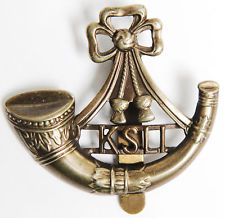Personal Details
Born: 13th March 1887 in Whitchurch, Shropshire and baptised 28th September the same year at St Alkmund’s parish church.
Family: Third of six children born to John Thomas and Charlotte A. Ankers of 6 Sherrymill Hill, Whitchurch, Shropshire. In 1910 he married Jennie Prince in Whitchurch, Shropshire. They had one daughter Edith V.A. born in 1921.
Residence: At the time of the 1901 Census Ernest was an inmate of Whitchurch Union workhouse. His mother was living in Newtown, Whitchurch, Shropshire with just three of her children whilst his father served a prison sentence. In 1911, newly married, Ernest and Jennie were living at Wyche Mill cottages near Malpas, Cheshire. Army service records list his address as 34 Grindley Brook, Shropshire. By 1939 he was residing at 38 Bargates, Whitchurch, Shropshire.
Employment: In 1911 Ernest was working as a waggoner at the mill. The 1939 register shows him as a general labourer and notes that he is a member of the ARP rescue squad.
Died: 1958 in Whitchurch, Shropshire.
Military Details
Regiment: King’s Shropshire Light Infantry
Rank: Corporal
Service Number: 25549
Date of Enlistment: Not known
Date of Discharge: 16th Oct 1919
Reason for Discharge: Not known
Other Information: Wounded September 20th 1917 and entitled to wear a ‘Wound Stripe’. Also suffered from malaria and was admitted to 28th General Hospital in August 1918.
He was one of five brothers who enlisted in the Army during WW1. Thomas Ankers died and is commemorated on Whitchurch War Memorial while the other four survived.
Ernest was awarded the Campaign Medals (British War Medal, and Victory Medal).

The British War Medal (also known as 'Squeak') was a silver or bronze medal awarded to officers and men of the British and Imperial Forces who either entered a theatre of war or entered service overseas between 5th August 1914 and 11th November 1918 inclusive. This was later extended to services in Russia, Siberia and some other areas in 1919 and 1920. Approximately 6.5 million British War Medals were issued. Approximately 6.4 million of these were the silver versions of this medal. Around 110,000 of a bronze version were issued mainly to Chinese, Maltese and Indian Labour Corps. The front (obv or obverse) of the medal depicts the head of George V. The recipient's service number, rank, name and unit was impressed on the rim.
The Allied Victory Medal (also known as 'Wilfred') was issued by each of the allies. It was decided that each of the allies should each issue their own bronze victory medal with a similar design, similar equivalent wording and identical ribbon. The British medal was designed by W. McMillan. The front depicts a winged classical figure representing victory. Approximately 5.7 million victory medals were issued. Interestingly, eligibility for this medal was more restrictive and not everyone who received the British War Medal ('Squeak') also received the Victory Medal ('Wilfred'). However, in general, all recipients of 'Wilfred' also received 'Squeak' and all recipients of The 1914 Star or The 1914/1915 Star (also known as 'Pip') also received both 'Squeak' and 'Wilfred'. The recipient's service number, rank, name and unit was impressed on the rim.

